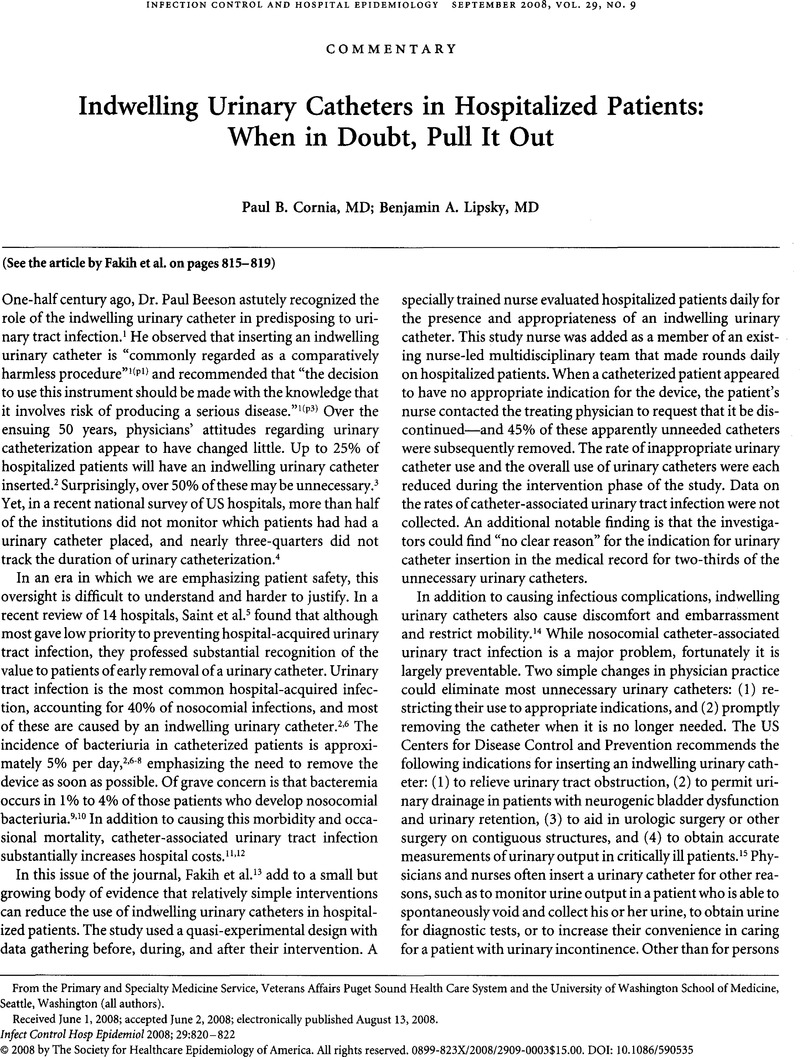Crossref Citations
This article has been cited by the following publications. This list is generated based on data provided by Crossref.
Trautner, Barbara W
2010.
Management of catheter-associated urinary tract infection.
Current Opinion in Infectious Diseases,
Vol. 23,
Issue. 1,
p.
76.
Nazarko, Linda
2011.
Should antibiotics be prescribed when urinary catheters are removed?.
British Journal of Community Nursing,
Vol. 16,
Issue. 8,
p.
374.
Burton, Deron C.
Edwards, Jonathan R.
Srinivasan, Arjun
Fridkin, Scott K.
and
Gould, Carolyn V.
2011.
Trends in Catheter-Associated Urinary Tract Infections in Adult Intensive Care Units—United States, 1990–2007.
Infection Control & Hospital Epidemiology,
Vol. 32,
Issue. 8,
p.
748.
Nazarko, Linda
2012.
Evaluating clinical indications for continued catheterisation.
Nursing and Residential Care,
Vol. 14,
Issue. 9,
p.
450.
Nazarko, Linda
2016.
Primum non nocere—how securement and fixation of indwelling urinary catheters can reduce the risk of harm.
British Journal of Healthcare Assistants,
Vol. 10,
Issue. 1,
p.
14.
Coleman, JoAnn
2017.
Pelvic Floor Dysfunction and Pelvic Surgery in the Elderly.
p.
91.
Trudel, Karen
Zavalkoff, Samara
Winters, Nicholas
Quach, Caroline
Lacroix, Jacques
and
Fontela, Patricia S.
2018.
Determinants of urinary catheter removal practices in the pediatric intensive care unit: A survey.
American Journal of Infection Control,
Vol. 46,
Issue. 6,
p.
627.
Nazarko, Linda
2020.
Primum non nocere—how securement and fixation of indwelling urinary catheters can reduce the risk of harm.
British Journal of Healthcare Assistants,
Vol. 14,
Issue. 2,
p.
84.
Nazarko, Linda
2020.
Primum non nocere—how securement and fixation of indwelling urinary catheters can reduce the risk of harm.
British Journal of Healthcare Management,
Vol. 14,
Issue. 2,
p.
84.



